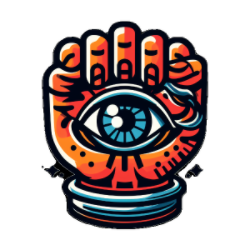In industry and in academia, not all research is equal in value, and, as you develop and grow as a researcher, you need to strengthen your ability to identify and prioritize high-value, strategic UX research. This is the stuff that influences operational planning, three-year plans, cross-product initiatives, org leadership, etc. It’s about big, complex topics with the potential for significant business and customer impact.
The good news is that the same skillsets that serve you well as a UX researcher will serve you in identifying and prioritizing high-value research and convincing your stakeholders about the same.
Here’s how I think about it. Identifying and prioritizing UX research opportunities shouldn’t happen in a vacuum. You have stakeholders and your stakeholders have roadmaps. You’re all part of a team part of an org part of a company that each have priorities, goals, in-flight and planned work, etc. This is the context in which you’re working. The setting of the story, as it were, and you need to understand that context in detail since it is the source material for analytical framework(s) you can use to identify and evaluate different UX research opportunities and then convince your stakeholders that 1-2 of those opportunities should be prioritized.
What are the org-level goals for the year? The next three years? What are priority projects on the product roadmap for the next six months? What are the leadership team’s goals for the year? The next three years? Where are the intersections between these goals and the org-level goals? UX research needs to steep itself in this data. What other research projects are going on or coming up? Include UX research, market research, business intelligence, data analytics, etc. in your workflow. These all represent different opportunities to plug in to other initiatives and force multiply the impact of your work.
I like to review product roadmaps and planning documents, business intelligence reports, org-level, company-level, and research team-level goals, and to have conversations with my stakeholders and org leadership team so that I understand what’s top of mind now and what we anticipate will be top of mind in the future. That’s all data, and because I’m a UX researcher I love all of it. I collate it, cross-reference it, analyze it, etc.. I live in it for awhile, and I bring stakeholders along for the ride in live conversations and brainstorming sessions. Everything I learn about planned projects, priorities, etc. goes into a strategic document outlining possible courses of action along with an argument for prioritizing one.
This document serves a few purposes. First, it makes an informed, opinionated recommendation about UX research. You want to reach a point in your career where you’re looking across product areas, evaluating and identifying opportunities for research, making recommendations, and obtaining buy-in from stakeholders to carry out the work. Second, it provokes questions and critique. That’s a good thing because sometimes people don’t know what they want or need, or even how to evaluate a possible course of action, until they see one laid out. So, lay it out. If they buy into it, great. If they don’t, that’s okay too because you’ll walk away with a much clearer idea about what next steps to revise your plan and obtain buy-in at a later date.
Doing the research that stakeholders bring to you is an important part of being a UX researcher. It’s interesting and fulfilling work, and it is easy to fill up a UX research roadmap, quarter after quarter, with research done only in response to stakeholder requests. But as you advance in your career, you have to have to have to take ownership over the UX research roadmap by evaluating, recommending, and carrying out high-value, strategic UX research projects.

Leave a comment